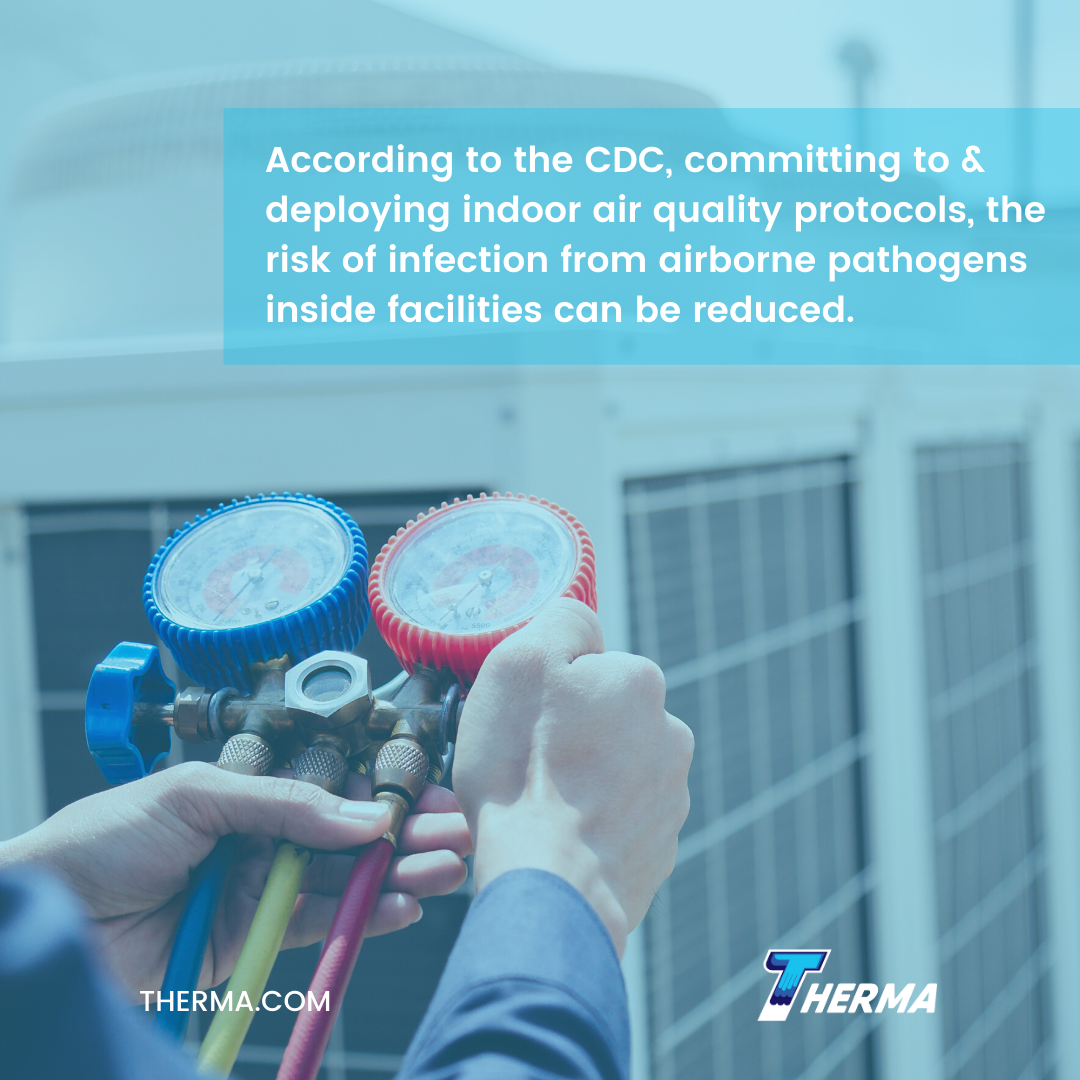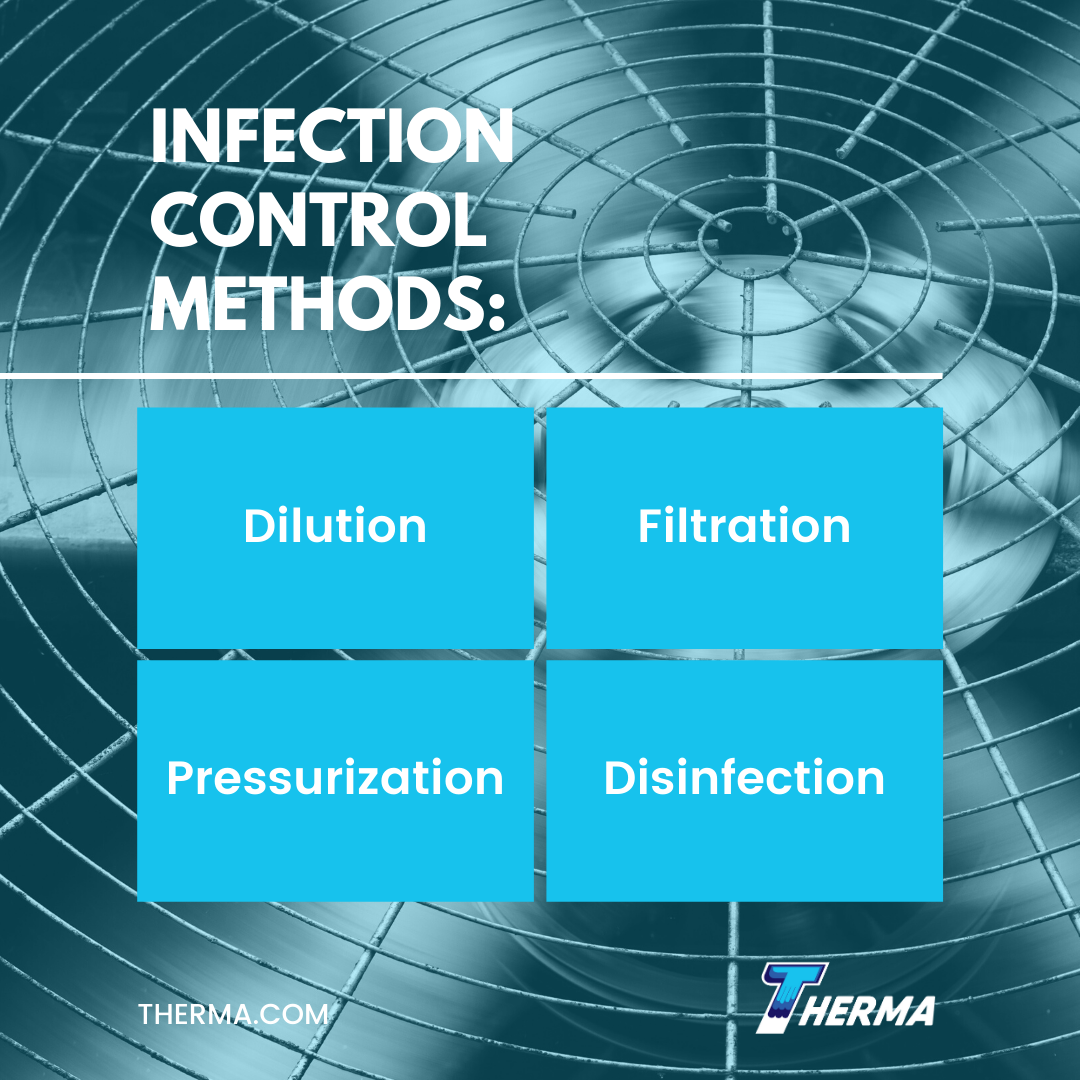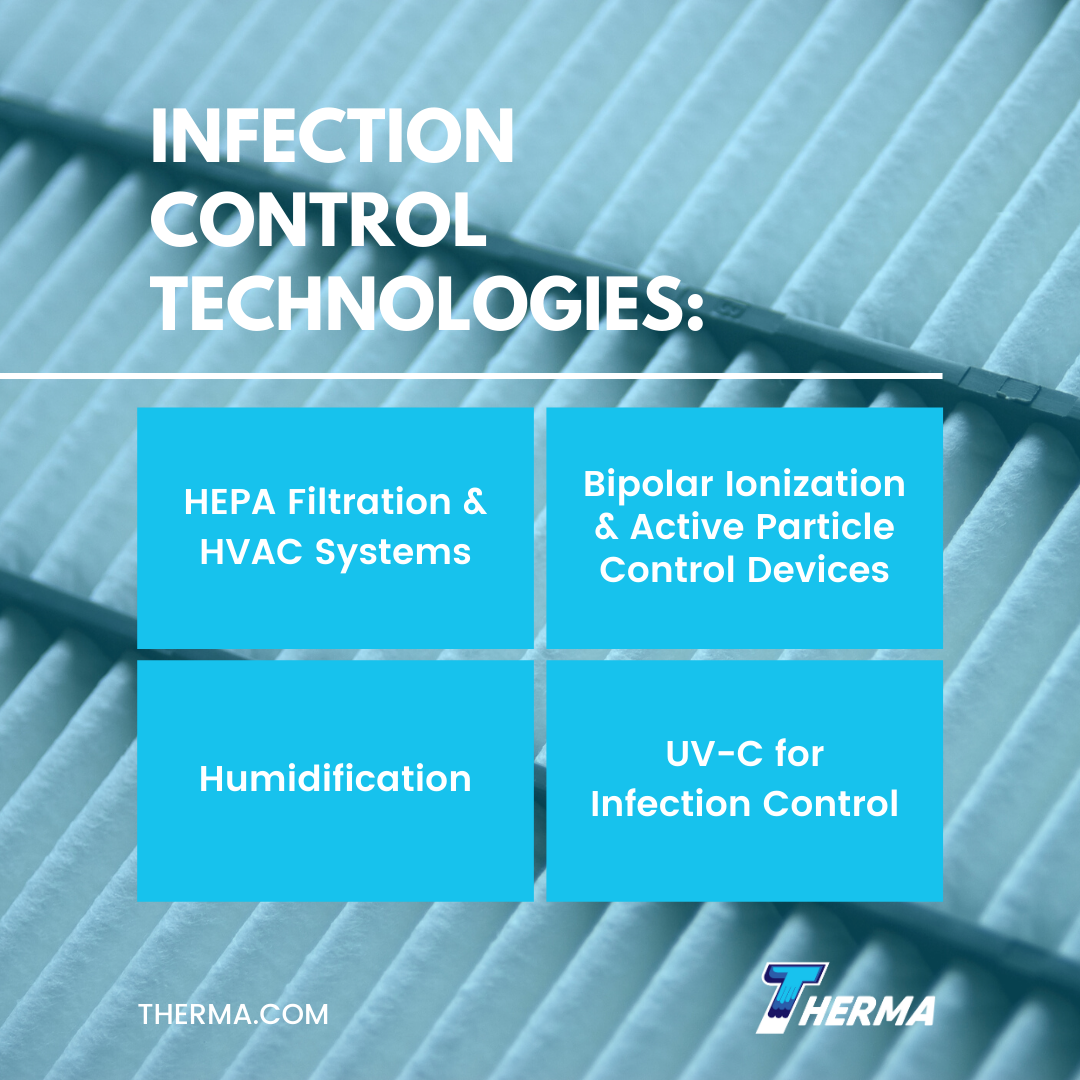How can infection control technologies help fight COVID-19?
What is infection control technologies? As shifts are made towards reopening non-essential healthcare buildings and facilities, the need for infection control is urgent. The COVID-19 virus is capable of surviving on surfaces for days and in the air for hours, meaning management of air sources and airflow inside of facilities is crucial.
Now, we have to figure out wow we can use infection control technologies to help fight COVID-19 and other hospital-acquired infections (HAI) in your buildings?

Airborne Pathogen Transmission
According to the CDC, respiratory infections can be transmitted via pathogens through the aerosolized oral and nasal secretions from infected persons. When someone infected with a respiratory virus, like COVID-19 sneezes, coughs, or even just talks, they expel infectious particles. These particles can attach to existing droplets or become the nuclei of new droplets.
Larger droplets fall onto surfaces or the floor. Still, smaller ones can remain indefinitely suspended in the air, travel over distances and have their lifespan extended if conditions are favorably dry, cool and lacking in direct exposure to sunlight or radiation.
By committing to and deploying indoor air quality (IAQ) protocols, the risk of infection from airborne pathogens inside facilities can be reduced. HVAC systems are one of the primary targets for adaptation before reopening a building to the public, patients, or staff.

There are four main types of methods that can be used to maximize infection control:
Dilution
Dilution ventilation introduces outdoor air at a pace of two to five complete air changes/hour (ACH), to dilute and exhaust contaminated air. However, dilution is impractical as a sole method of infection control, as the energy required to condition outdoor air with 100% turnover multiple times an hour is cost-prohibitive.
Filtration
Filtration can remove a large percentage of infectious agents with every complete air change cycle. The speed and efficacy with which infectious agents are removed can be maximized in two ways: by increasing filter efficiency or increasing the air change rate. Like dilution, filtration can be inefficient as a sole course of infection control. Depending on the existing HVAC system, filters may not be able to be upgraded past a certain point without dangerous drops in pressure.
Pressurization
Pressurization itself can protect against cross-contamination via air infiltration from one room or space to another. Air handler and filter resistance increases can cause system air volume to be reduced, but high HVAC coil pressure can negate pressurization techniques, compromising air pressure and allowing contaminated air to infiltrate the space.
Disinfection
Surface disinfection at regular intervals can help rid surfaces, objects and flooring of viral contamination, but like other methods, this method alone will not deliver satisfactory infection control. However, certain disinfecting technologies can be implemented to help assist other infection control methods for improved results.

By implementing a combination of the four methods described above, infection control is best achieved by utilizing the latest technologies to help prevent airborne transmission of the infectious disease.
HEPA Filtration & HVAC Systems
HEPA filters can be added to HVAC systems (assuming air pressure will not drop to unsafe levels by increasing air resistance). HEPA filtration can capture most droplets and particles large enough to host the virus.
If your building HVAC system does not operate correctly with HEPA filters, they can be placed in individual air filtration machines in critical areas where transmission risks are higher to reduce risk.
Switching from variable air volume (VAV) boxes to pressure-independent flow metering technology can improve the efficiency of HVAC systems and potentially permit HEPA filters to be safely placed.
Bipolar Ionization & Active Particle Control Devices
Electronic air filtration devices may use bipolar ionization to remove more particles from the air, which may be of help if air supply turnover for a room is slow, or the room has a high density of people.
The device generates ions to electrically charge the particles, which can then be attracted to oppositely charged collecting plates. These are also known as active particle control devices.
Humidification
Indoor humidification can also help to reduce COVID19 transmission risk. Adding humidification to air that has been dried by heating can improve infection control and minimize replication of the virus that occurs in cool, dry conditions.
UV-C for Infection Control
UV-C systems can be deployed against infectious agents in three areas: coil irradiation, airstream disinfection and upper-air (upper-room). UV-C lamps can generate continuous UV-C with a peak wavelength of 254 nm, almost exactly the optimal wavelength for maximum germicidal effect.
Coil irradiation and airstream disinfection can be accomplished by installing UV-C fixtures inside the HVAC unit or duct. Upper air/room disinfection can be achieved with UV lamps that only function when rooms are unoccupied and are typically fitted with motion sensors.
To learn how Therma can help you implement infection control methods and technologies that can reduce the concentrations of airborne infectious agents in your building(s) and allow you to reopen facilities with less risk to patients and personnel, reach out today.







